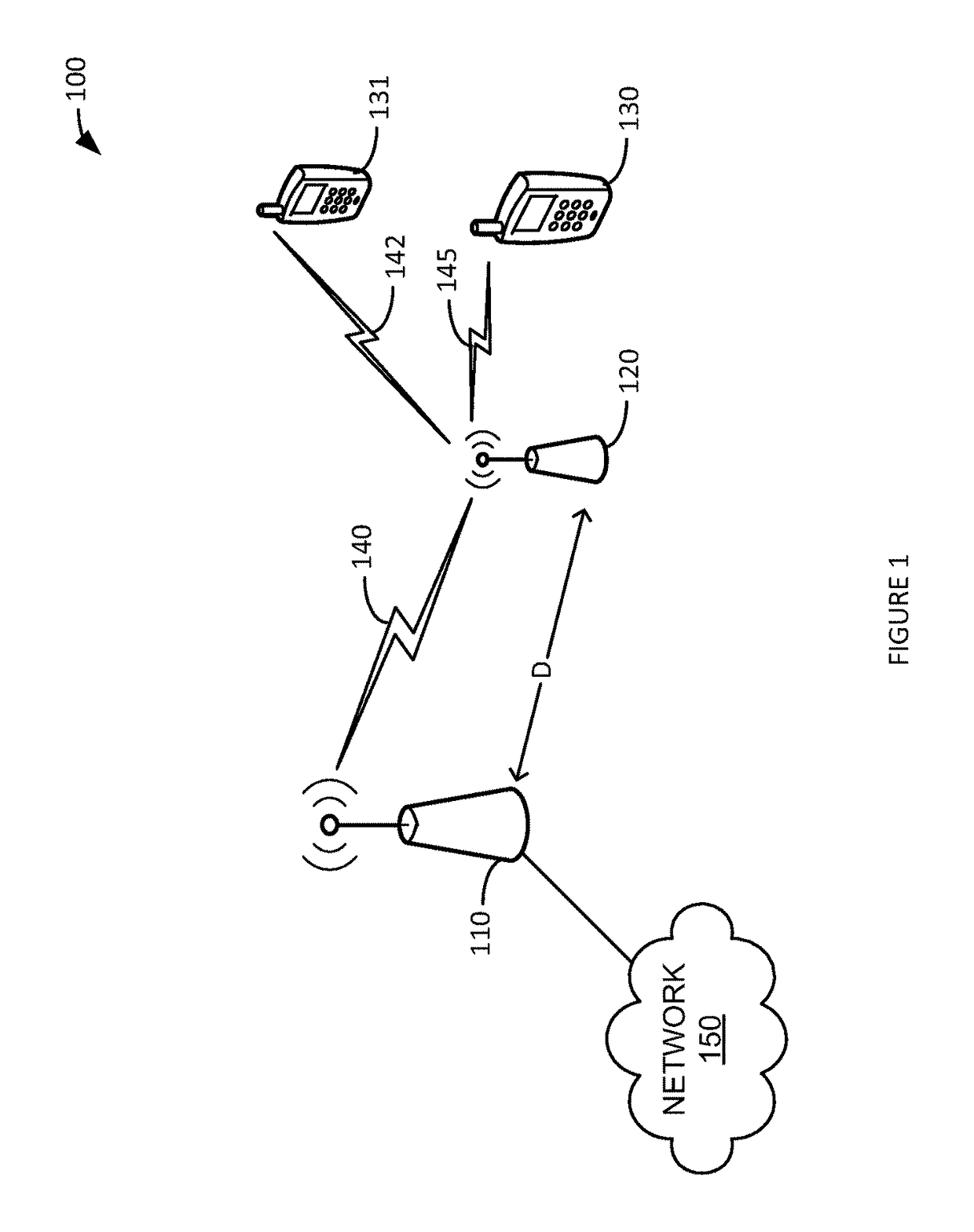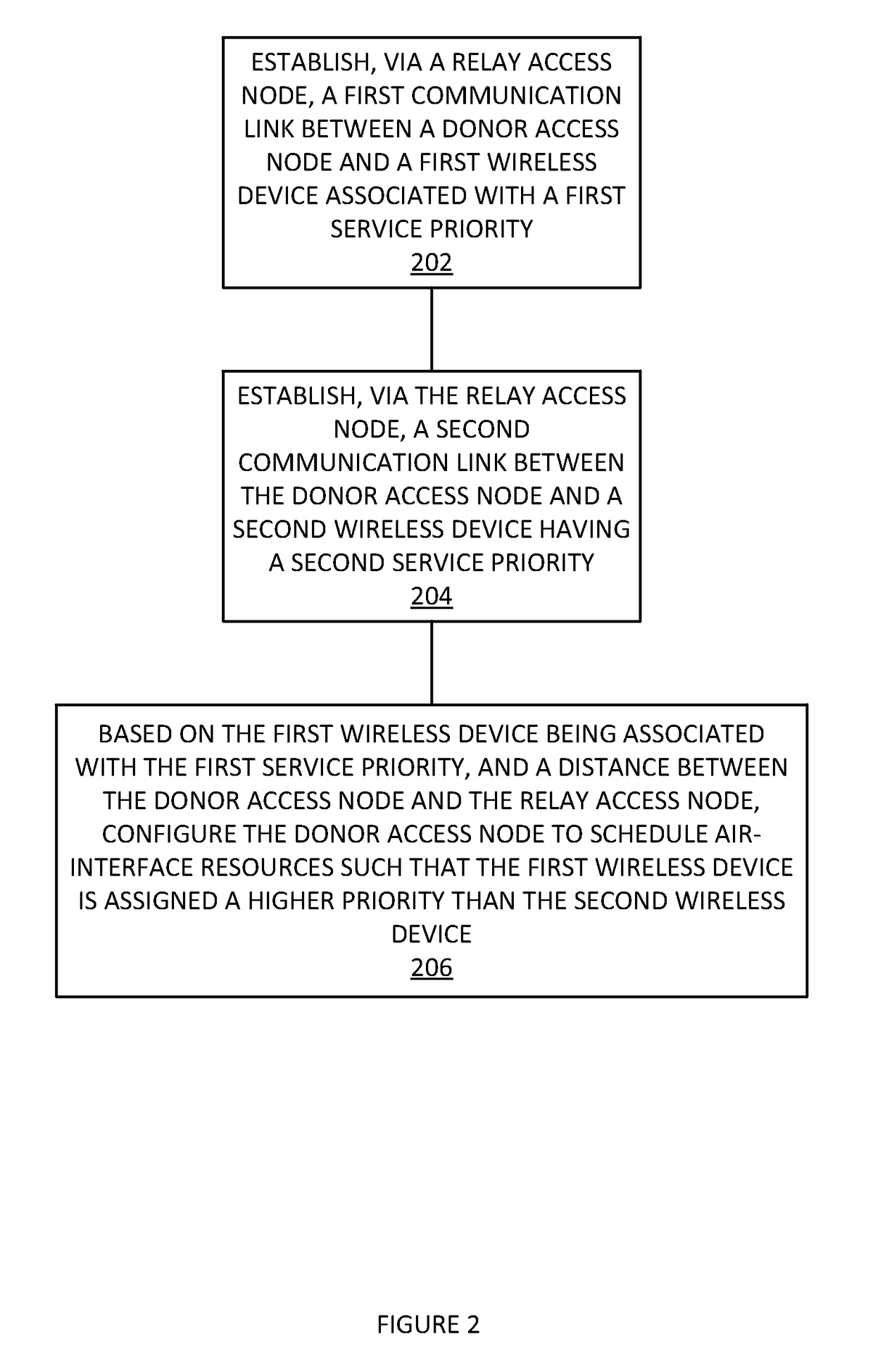Quality of service enhancement for wireless relay networks
a wireless relay and service enhancement technology, applied in data switching networks, high-level techniques, frequency-division multiplexes, etc., can solve problems such as the last mil
- Summary
- Abstract
- Description
- Claims
- Application Information
AI Technical Summary
Benefits of technology
Problems solved by technology
Method used
Image
Examples
Embodiment Construction
[0013]In an embodiment, wireless devices in a network are associated with quality of service (QoS) profiles (e.g., “silver” or “gold”) that help determine how their traffic is handled relative to each other. In other words, a “gold” user's traffic may be handled before (or faster) than a “silver,” etc. user's traffic in order to provide a better experience to the gold user. To help improve the quality of experience seen by users with high QoS profiles, traffic destined for a high QoS profile wireless device via a relay access node is scheduled taking into account the distance the access node relay is from the donor access node. In other words, gold users are given a higher priority than other users when allocating air-interface resources being sent via a relay access node that is far from the donor access node. This helps improve the gold user's experience when compared to other users by compensating, at least partially, for RF transmission and relay access node delay.
[0014]In an em...
PUM
 Login to View More
Login to View More Abstract
Description
Claims
Application Information
 Login to View More
Login to View More - R&D
- Intellectual Property
- Life Sciences
- Materials
- Tech Scout
- Unparalleled Data Quality
- Higher Quality Content
- 60% Fewer Hallucinations
Browse by: Latest US Patents, China's latest patents, Technical Efficacy Thesaurus, Application Domain, Technology Topic, Popular Technical Reports.
© 2025 PatSnap. All rights reserved.Legal|Privacy policy|Modern Slavery Act Transparency Statement|Sitemap|About US| Contact US: help@patsnap.com



